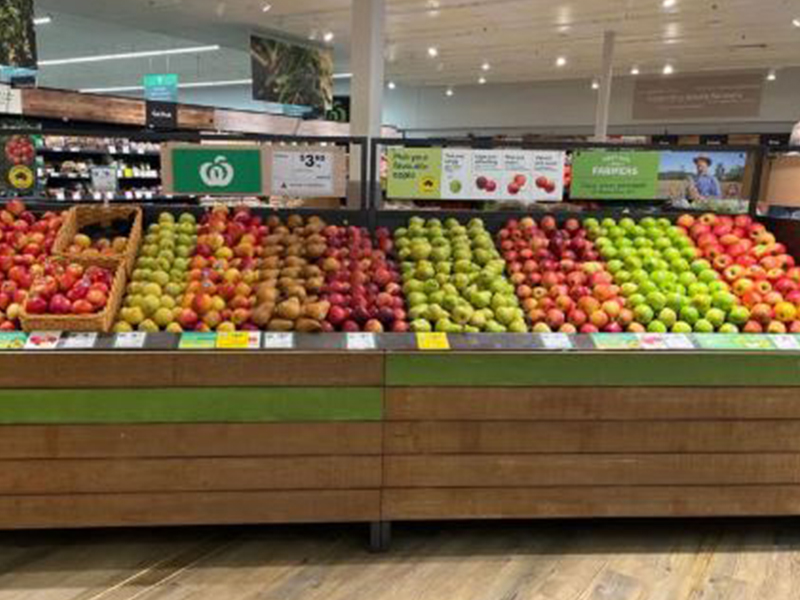
In 2022, the apple and pear industry worked with retailers to deliver a better shopping experience for customers when buying Australian apples and pears. The levy-funded investment Apples and pears quality assurance program (AP21002) educated retail staff on best practice merchandising principles to improve the appearance and quality of produce in-store.
Delivered by Strikeforce, there were two components to the program:
- In-store quality assessments of the apple and pear displays, including an evaluation against best practice merchandising principles to help improve the quality of displays and produce.
- Store staff education on the importance of well-merchandised product in line with best-practice guidelines to assist and grow sales outcomes.
How did the program run?
The program ran from April to July this year, with 700 stores across Coles and Woolworths receiving weekly visits from a team of dedicated merchandising representatives. The program’s primary goal was to see whether improved displays encouraged consumers to increase the frequency and weight of their purchases.
The merchandising personnel visited 400 Woolworths and 300 Coles stores for 18 weekly visits, each taking around 40 minutes. Fifty-eight per cent of the visits were in the morning, and 42 per cent were in the afternoon/evening to allow for a cross-section of results . The merchandising team conducted the biweekly call. The products reviewed on each call were:
- Apples – Envy, Granny Smith, Jazz, Kanzi, Pink Lady, and Royal Gala
- Pears – Beurre Bosc, Packham, William Bartlett and Corella.
Data was captured and inputted to an online dashboard, and photos from every store were uploaded to a gallery. The merchandising team educated store staff via training videos, and tip sheets were distributed and held in every store. Regular updates from Coles and Woolworths were positive throughout the project, with household penetration reported to have improved by two per cent since the program’s inception.
The Hort Innovation Customer Marketing Team had regular meetings with Woolworths and Coles across the season to discuss any ongoing availability and presentation opportunities.
What were the results?
The program was highly successful, with the data showing an improvement in sales across merchandised stores versus not merchandised stores of up to 3:1. Woolworths and Coles both saw strong results across the presentation, availability and quality performance measures, with several areas identified for improvement. Over 1500 store produce staff were trained on correct merchandising principles.
Ninety-seven per cent of stores now have the quality of display rated as either Good or Fair, up from 78 per cent at the commencement of the program.
Eighty-four per cent of stores have a full/ or three-quarters full display, up from 61 per cent, and 86 per cent of stores now have no product presentation issues, up from 52 per cent.
Product with defects has steadily reduced throughout the program, and a gradual upward trend was seen in product availability. The results showed a steady improvement in the reduction of defects and the availability of products, meaning the training and the weekly merchandising visits helped change in-store behaviour and lift display standards.
Meet Phil Turnbull, CEO of APAL
“Appealing point-of-purchase displays that entice consumers to the category are at the foundation of any consumer investment. If the point of purchase experience is a poor one, any marketing investment beyond this is somewhat redundant. Having well-executed in-store retail merchandising is a powerful tool to build trust in the category.”
